Classic Cottage Garden Plants
I think classic cottage garden plants need to be either very easy to care for, or give such a beautiful flower display that they are worth the attention lavished on it. Luckily, there is a huge selection to choose from and I’ve picked a few of the favourites that have featured in my gardens over the years. With the exception of a rose, these are all herbaceous perennials that spread each year filling the spaces in the garden. If they outgrow their allotted space, they can be divided and moved to other areas, or given to friends.
Quick guide to petal arrangements
- Single flowers usually have one row of petals around a centre, where the stamens are.
- Semi-double flowers may have two or three rows of petals around a centre.
- Double flowers have multiple layers of petals around the centre and in some cases, the stamens may not be immediately visible until the flower’s petals start to droop or fall.
- Fully double flowers have a ball or dome of petals with no visible stamens.
Achillea millefolium ‘Cerise Queen’

A friend gave me some tiny plug plants of Achillea and within three years, they had grown into a large area filled with fragrant, almost pungent, foliage with flat heads of clusters of tiny colourful flowers. Highly attractive to pollinators, Achillea are fast-growing, robust plants with spreading roots, which have the potential to become a nuisance. Try growing in large pots if space is limited. Achillea are available in a wide range of colours from white to yellow and red. ‘Cerise Queen’ has vibrant pink petals that fade to pale pink or white as the flowers age. They prefer not to be in wet soil during winter, but are otherwise, fully hardy. Height and spread 60cm.
Hemerocallis
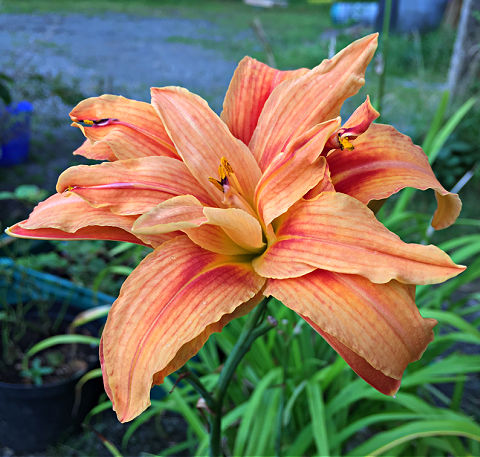
Often known as the daylily, the flowers of these clump forming plants are short-lived, but more flowers quickly open, flowering from June to September. The flowers are held above the strap-like leaves at the top of the fairly stiff flower stems. Hemerocallis are available in a wide range of colours from darkest red-brown to off-white. Height depending on variety from 20cm to 150cm and spread 30cm to 75cm. They are unfussy about soil and situation, and will thrive in full sun and partial shade.
Penstemon Digitalis ‘Mystica’
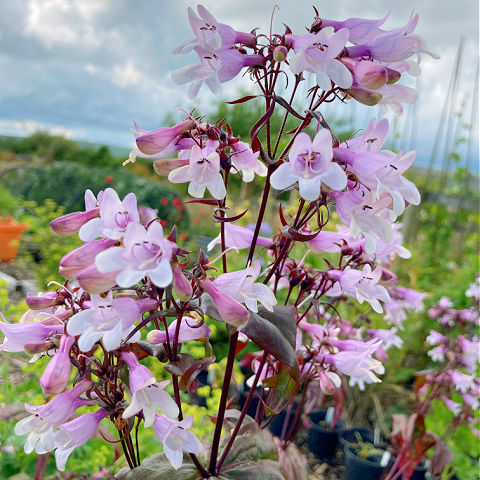
An interesting addition to the cottage garden, I suggest it in place of the more common border hybrid Penstemons. This one has evergreen leaves at the base and produces deepening shades of bronze leaves throughout the growing season. Panicles of flowers appear in early summer that stand out well against the colourful leaves. Penstemon Digitalis ‘Mystica’ grows to 75cm height and 45cm spread and prefers full sun, in well-drained soil, in a sheltered spot. Avoid growing in clay soil. It is hardy in most places in the UK and Ireland, even in a severe winter.
Lysimachia punctata
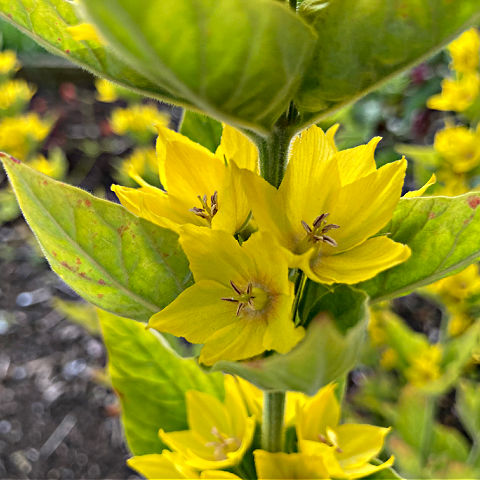
The first time I saw the yellow flowers of Lysimachia I was smitten with them! They grow in the leaf axils around the upper part of the stem and the intensity of the yellow colouring is striking. It’s a spreading herbaceous perennial that could become a bit of a thug if left for long periods, but all the same, it has earnt a place in each garden I’ve tended. Grow in clay or loam soils in full sun or partial shade, in that moist, but free-draining or even slightly boggy soil. Hardy throughout UK and Ireland. Height up to 90cm and spread 75cm.
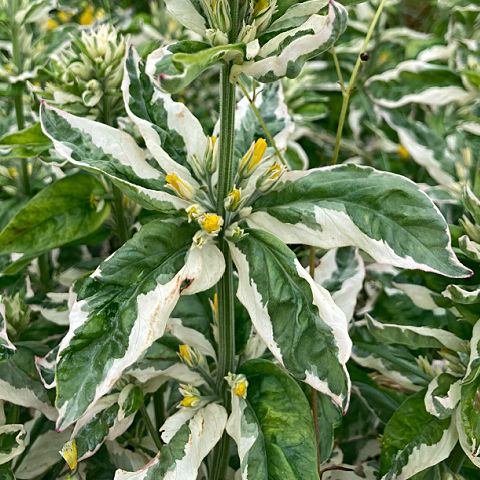
For added interest, try Lysmachia puncata ‘Alexander’ which has cream and green variegated leaves.
Campanula lactiflora ‘Prichard’s Variety’
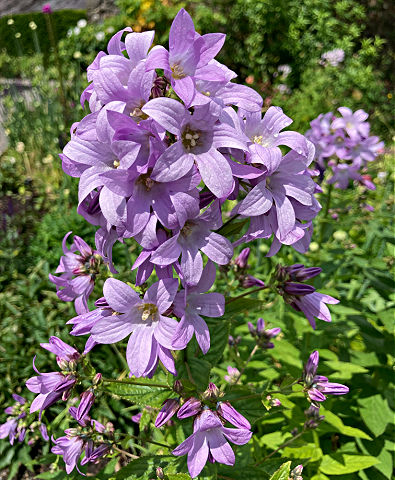
This clump forming perennial has an upright habit and plenty of bell shaped flowers. Grow in full sun or partial shade in alkaline or neutral, chalk or loam soil. Growing to 75cm in height, it prefers a sheltered spot, but can be staked if on a windier site. It is fully hardy, even in the severest of winters. Propagate by division in spring or autumn.
Lupin
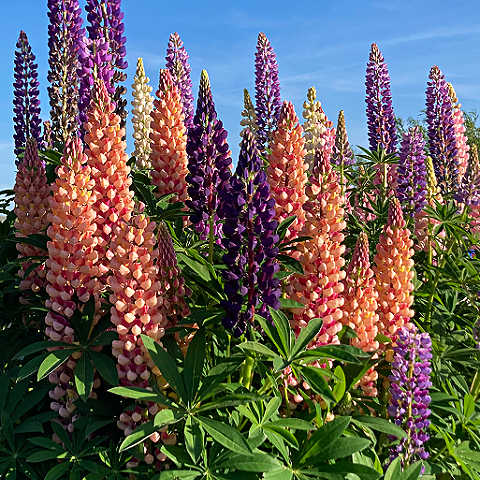
Lupins are robust and, if you deadhead on a very regular basis, they will continue to put on a show from early summer until the first frosts. I think this helps to make them classic cottage garden plants. They are very easy to grow from seed and come in a wide range of single colour or two-tone flowers. Modern hybrids offer more compact plants which are ideal for smaller gardens or growing in tubs. Provide support for plants on an exposed site and also to prevent plants from flopping over into pathways and surroundings plants as they become top-heavy with flower spikes. Lupin aphids can be a nuisance, but can easily be removed by wiping a hand along each stem on a regular basis. Height 100cm – 120 cm and 60cm spread.
Geum ‘Mrs J. Bradshaw’ (d)
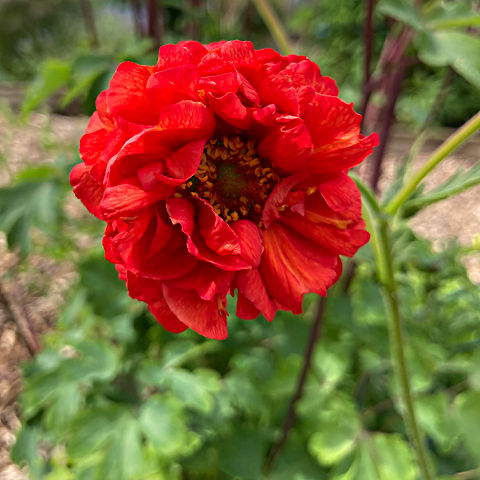
Geum are reliable and free flowering plants. Geum ‘Mrs J Bradshaw’ has bright red, semi-double flowers which are held above the foliage on wiry stems. Height and spread 60cm. Grows best in full sun in any soil, except clay. They are hardy throughout the UK and Ireland, even in a severe winter.
Phlox paniculata ‘Bright Eyes’
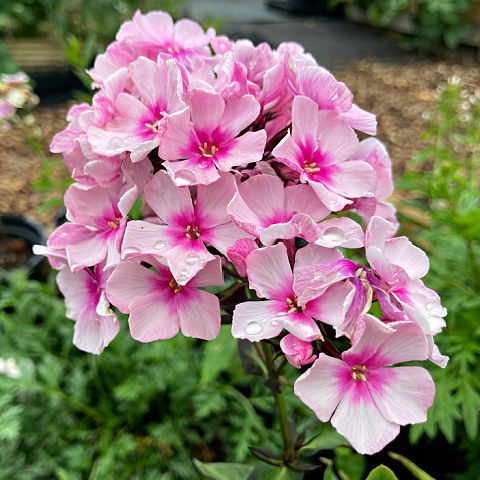
There are so many varieties of Phlox to choose from, two of my favourites are a pure white flowered variety called ‘White Admiral’ and this pale pink flower with a deeper pink towards the centre. Phlox paniculata ‘Bright Eyes’ grows to 90cm height and 50cm spread. They are unfussy about soil and situation, but may fail to thrive on dry or waterlogged soils. Phlox are fully hardy and flower from summer to autumn.
Leucanthemum x superbum ‘Wirral supreme’
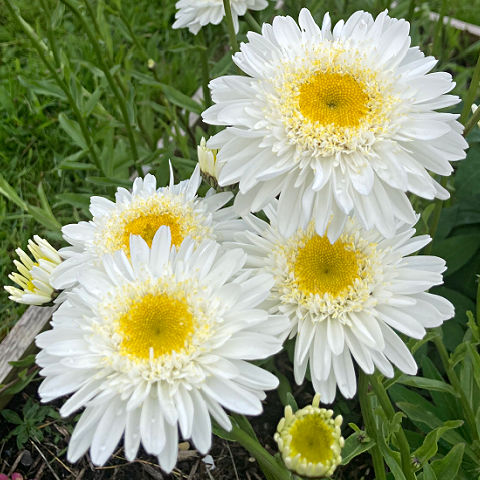
Think of big daisies and you’ll most likely imagine a Leucanthemum. These clump-forming shasta daisies can be quite vigorous, but are easy to keep in check by lifting and dividing in spring. I love the splash of clear white that they add to the summer border. Leucanthemum x superbum ‘Wirral Supreme’ grows to 70cm high and has flowers that are 10cm across. The flowers are highly attractive to flying insects. Place between other plants or provide support, to prevent stems flopping over in the wind.
Geranium macrorrhizum
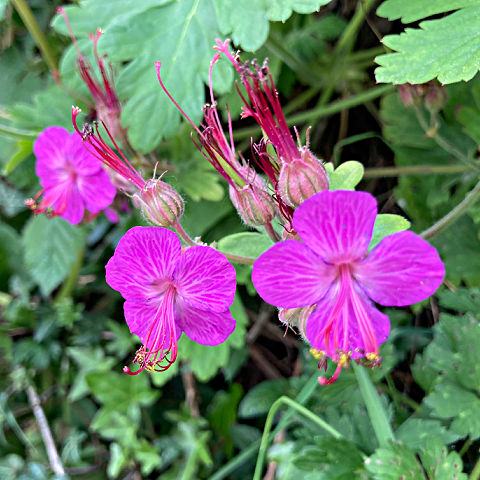
Here’s a real workhorse of the cottage garden, providing interest for a long time each year. Geranium macrorrhizum are semi-evergreen, only losing their leaves during a tough winter. The sticky, fragrant leaves can turn shades of yellow and red during the autumn. And in the summer, bright magenta pink flowers appear above the foliage. They grow happily in full sun, partial shade and full shade, in all soil types and any aspect. They are drought-resistant and fully hardy.
Astrantia ‘Roma’ (PBR)
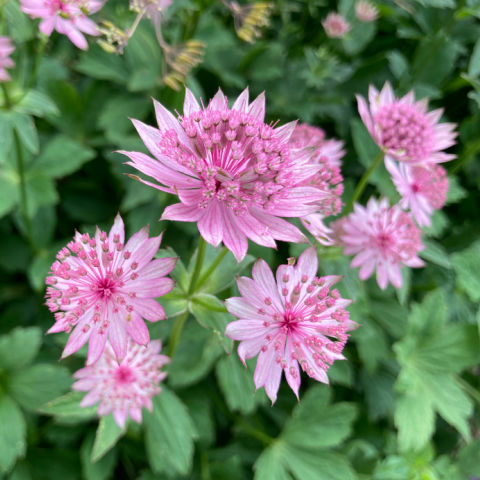
I have a couple of Astrantia in my garden, but neither are this delightful pink flowered variety. ‘Roma’ is strong growing and has a long flowering season. Deadhead regularly to encourage continued flowering from June to September. Astrantia are unfussy plants that are hardy across UK and Ireland, even in the severest of winters. They will thrive in full sun or partial shade, although they don’t like prolonged periods of dry at the roots. Height 60cm and 40cm spread.
Symphyotrichum novae-angliae ‘Andenken an Alma Pötschke’
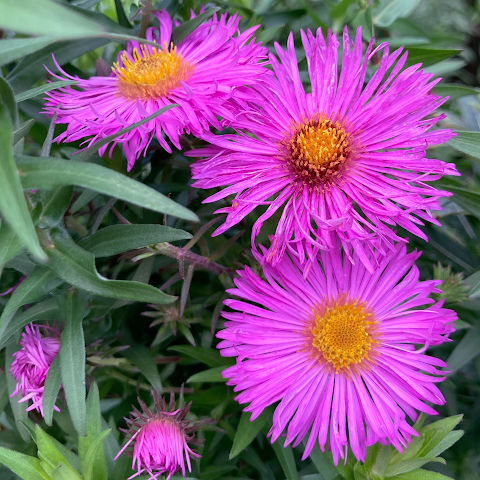
Previously known as Asters, these are the plants that helped me fall in love with gardening. I saw how to propagate them from cuttings, tried it and was hooked! They are easy-going, fully hardy plants, and will thrive in full sun and partial shade. Available in a range of colours, but for a strong statement in the border, try ‘Andenken an Alma Pötschke’. Year after year the plant spreads and provides a more striking display. Height 90cm -120cm and spread 120cm – 150cm. Propagate by division in spring and they also grow easily from cuttings.
Roses
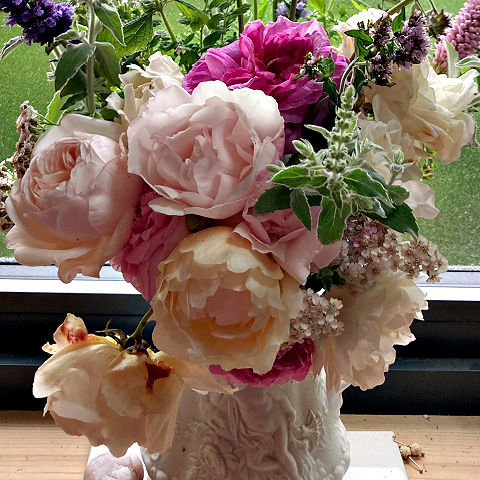
It feels wrong to write about classic cottage garden plants without including at least one rose. Whether you prefer big, billowing blooms or small, open flowers, there will be a rose for you.
Rosa ‘Kew Gardens’ (‘Ausfence’PBR) (S)
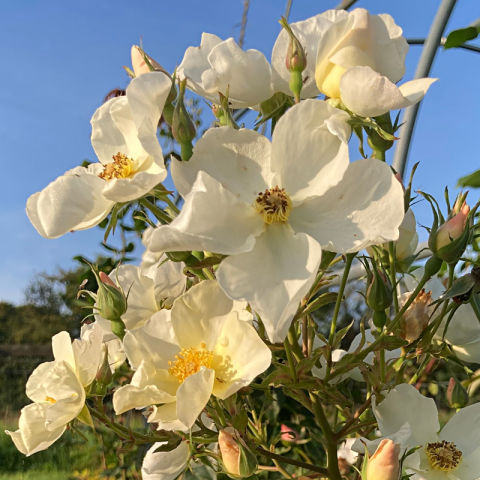
Over the last few years, I have enjoyed the mass of single flowers produced by Rose ‘Kew Gardens’. It has an upright habit, although nicely bushy and the advantage of being thornless, and is repeat flowering. The lightly scented flowers grow in large clusters and are cream with yellow stamens. Grows on all soils except waterlogged or very dry and prefers a sheltered spot. That said, we have it growing on an exposed hillside and it produces plenty of flowers each year. Height and spread 125cm.
Centaurea montana Perennial cornflower
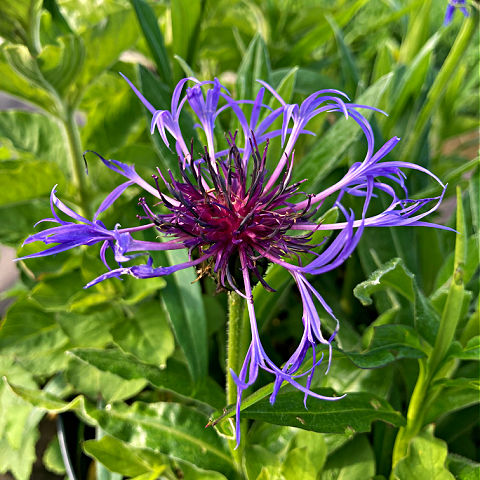
More information
The article ‘Classic Cottage Garden Plants’ was written for Amateur Gardening magazine in 2025. I have updated some of the specific varieties and images. Links are included to help you find the suggested plants.
Which are your cottage garden favourites? Please leave a comment, especially if you live in a climate that is different to the oceanic temperature climate of the UK. It would be great to build a resource for gardeners across the globe.
- Protected: Urban back garden - August 28, 2025
- White garden in early summer - August 28, 2025
- Classic Cottage Garden Plants - August 15, 2025
